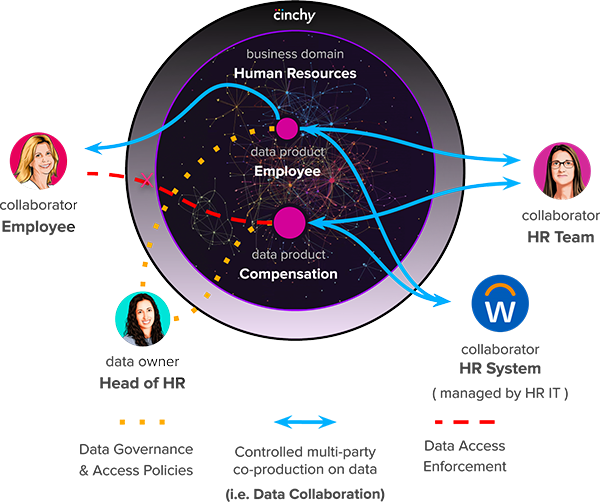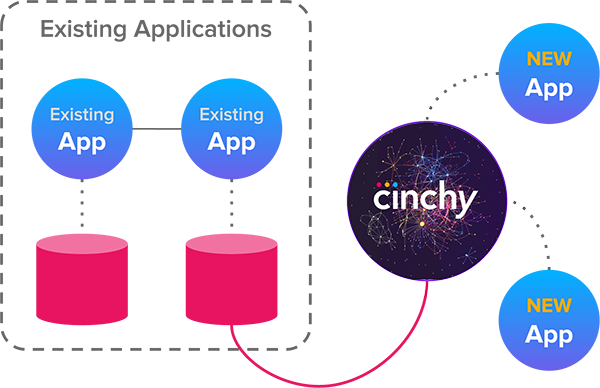Data Federation
Federate Your Data to Unblock Enterprise Agility Without Losing Control
Data Federation uses data mesh principles to transform your data into federated data products, making it simple and secure for teams, systems, and AI to co-produce data. These data products are owned and governed by the business, without the business having to do all the heavy lifting.
Enhance Data Control
Business stakeholders, as Data Product Owners, can make changes, set access policies, and oversee data governance without relying on IT, ensuring data remains a strategic asset.
Data as a Product
Simplify the management of data products. Automation of lineage and auditability, as well as historical data and metadata access, makes data management efficient and robust.
Data Co-Production
Data Product Owners authorize multiple producers, enabling them to access and change data independently but within the owner-defined control and governance policies.
The Value of Data Federation
Data Federation right-sizes how the enterprise handles data, shifting control and governance into the hands of the business, and reducing IT dependencies while enabling secure, collaborative data management. Data Federation streamlines operations, improves data quality, and paves the way for controlled agility.
Eliminate data silos
Data silos are the nemesis of efficient collaboration and decision-making. Data Federation breaks down these barriers by creating a network of accessible data products.
Minimize IT dependencies
Waiting on IT for data changes can slow down your organization. Data Product Owners can make changes without IT intervention, driving faster innovation.
Granular access control
Data Access Controls and automated Data Access and Privacy Policies enforced across all applications ensure robust data security and compliance, mitigating risks.

Unlock the full potential of Data Federation
Create a network of reusable products that can be easily accessed by various teams and technologies.
Granular Data Access Controls
Easily manage who can access what data, ensuring data security and compliance.
Data Change Approvals Workflows
Streamline data change approvals for a more efficient and flexible process.
Active Metadata Engine
"Activate" your metadata by using as easily as you can use regular business data
Data Time Machine
Access historical data and metadata to enhance your analytics and decision-making.
Secure Co-Production
Enable data product owners to collaborate securely, co-producing valuable insights.
Data Privacy Compliance
Tailor data access and governance to meet the rapidly evolving data privacy standards and regulations.
Automated Lineage and Auditability
Ensure data lineage is maintained and audits are conducted without manual effort.
Data Version Control
Easily manage changes, track versions, and roll back to previous states when necessary
Avoid big-bang. Achieve Data Federation iteratively by "changing how you change"
Define Your Data Products
Adapt your change process to ensure federation is a part of future projects, building collaborative/dynamic data products only as you need them to deliver business value.
Establish Business Ownership
Empower business teams to iteratively take ownership of data products without requiring deep IT expertise within the business.
Evolve Your Data Products
Adapt your methodology and tools to enable continuous adaptation and reuse of your data products as your business changes over time.
Achieve Data Collaboration
Enable controlled co-production of data products
Data Federation facilitates a collaborative approach to data management. Allowing multiple teams, stakeholders, and data owners to collectively contribute, access, and interact with data within a secure and controlled environment. Data Product Owners play a pivotal role in enabling this controlled multi-party co-production by defining and enforcing data access policies and maintaining data integrity.


Don't 'rip-and-replace'
Get started with your next project
This is not a rip-and-replace solution. You do not need to rebuild your entire data ecosystem in order to benefit from Data Federation.
By starting from your next project, you are simplifying work you already doing, and setting yourself up for success for each new future project.
Ready to create a federated data network?
Get a personalized demo tailored to your specific business needs.